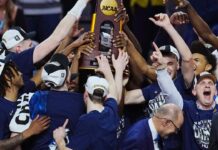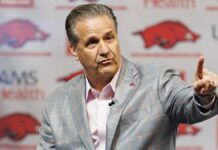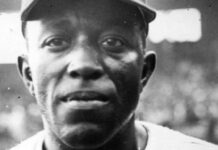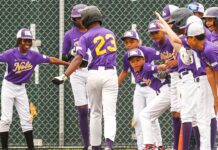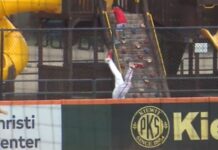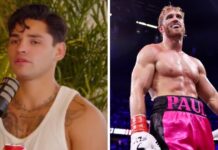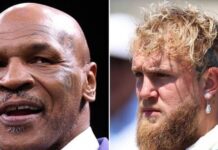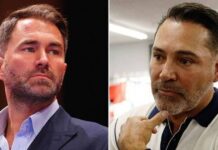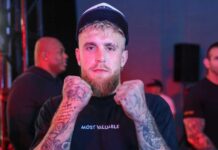We already know the Baseball Hall of Fame’s Class of 2022 will have at least six members, because a pair of Era Committees announced on Dec. 5 that Gil Hodges, Jim Kaat, Tony Oliva, Minnie Miñoso, Buck O’Neil and Bud Fowler will be the newest inductees who enter during 2022’s ceremonies. They may or may not be joined by more; on Tuesday night on MLB Network, the Hall will announce whether anyone gained the required 75% of votes from the Baseball Writers’ Association of America.
That ballot contains a list of more modern names, some of the greatest names in baseball history, nearly all of whom contain some kind of serious baggage that has kept — or may yet keep — them out of Cooperstown, which is exactly what happened last year. But seeing that kind of star power on the ballot made us start to think, would this be the greatest class ever, if the top four players all made it in? (They won’t. But still.) If not, which class was? And why stop there? What would a ranking of all Hall of Fame classes look like?
Well, this. It would look like this. This is what a ranking of all Hall of Fame classes would look like. Dating back to the first Baseball Hall of Fame class in 1936, there have been 79 different classes inducted into Cooperstown, with this year representing the 80th. We’re going to rank each and every one of them, which is an objectively nuts thing to do.
We’ll use Baseball-Reference WAR, and we’ll look at all players inducted in a particular class regardless of whether they were chosen by the Baseball Writers’ Association of America, various versions of Veterans Committees, or other means. There are, of course, plenty of Hall of Famers who were chosen as pioneers or executives, but we’re focusing just on those inducted as players. (That last part is important; it’s not like Casey Stengel, Tony La Russa, Whitey Herzog, Joe Torre, Branch Rickey and other managers, pioneers and executives didn’t have Major League playing careers, but that isn’t why they’re in Cooperstown.)
Negro League legends are of course included as well, regardless of whether they appeared in the American League or National League post-integration. It’s worth noting, though, that not only do Negro League players remain underrepresented in the Hall, a stat like WAR doesn’t truly tell the tale of these players because record keeping of the time is mostly incomplete. It’s possible yet that these numbers could change as more and more Negro League stats are accumulated and added to the official record.
As a reminder, while the Hall has had annual balloting for decades now, that hasn’t always been the case. From 1940-45, the writers voted only every third year, before reverting back to annually. Then, from 1957-65, it was every other year, before resuming the annual process we’re familiar with in 1966. (Cumulatively, there were nine times no writers’ election was held.) Plus, the Era/Veterans/Old-Timers etc. committees had their own somewhat inconsistent schedules.
There have also been considerable changes to rules regarding run-offs, minimum vote requirements to remain eligible, post-retirement eligibility rules and so on over the years. There’s a maximum of 10 names on a ballot now; at times, there was a minimum of 10 names. The writers, for example, were charged with getting 10 names in between the first vote in 1936 and the official opening of the Hall in 1939. So much has changed; you can read all about that here.
All that said: From best to worst, these are all the classes of the Baseball Hall of Fame, ranked, for your enjoyment.
1. The Class of 1936 (737 WAR)
Inductees: Babe Ruth, Honus Wagner, Christy Mathewson, Walter Johnson, Ty Cobb
Of course the first class would be the best, and not just because those are five Bright Flashing Names so far as baseball names go, so great that it’s not just “Babe Ruth and four other guys,” because all five of these names were incredible. But this one will never be topped because it was the first class, meaning everyone who had ever played to that point was fair game for induction. Wagner and Mathewson, for example, were two decades past the end of their careers, yet still available to be included here all those years later.
1a. The Hypothetical Class of 2022 (692 WAR)
There are a million reasons why the four biggest names, WAR-wise, on this year’s ballot (Barry Bonds, Roger Clemens, Alex Rodriguez and Curt Schilling, combining for 499 WAR) won’t likely be gaining entrance on the 2022 ballot. If they were getting in, then three of them (aside from Rodriguez, making his first appearance) would have been in years ago. But just for fun, if the top four from this year’s ballot all got in? And if you added them to the six players selected by the Era committees in December, currently at No. 41 on this list by themselves? It would legitimately be one of history’s greatest — if also most divisive — classes.
2. The Class of 1939 (565 WAR)
Inductees: Lou Gehrig, “Old Hoss” Radbourn, Cap Anson, Buck Ewing, George Sisler, Eddie Collins, “Wee” Willie Keeler
A particularly interesting group entered in 1939, in part because they entered via three methods. The writers voted for three (Sisler, Collins, Keeler), the Old-Timers Committee chose three more (plus three more pioneers or executives), and finally Gehrig was included via a December special election, months after the rest of this group had already been inducted, in recognition of the fact that the disease that would come to bear his name had ended his career.
He’s the big name here, but Collins is one of the more underrated all-time greats; not only was he an incredible player for a quarter-century, he later was responsible for bringing Ted Williams to the Red Sox. It wasn’t all good, though; Collins had his plaque removed from Fenway Park in 2018, reportedly due to his refusal to sign Black players, including Jackie Robinson, who had a workout for Boston in 1945.
3. The Class of 1946 (543 WAR)
Inductees: Jesse Burkett, Frank Chance, Jack Chesbro, Johnny Evers, Tommy McCarthy, Joe McGinnity, Eddie Plank, Joe Tinker, Rube Waddell, Ed Walsh
A shutout, except it wasn’t. The writers selected no one, so all 10 names above were turn-of-the-century stars selected by the Old-Timers Committee, in part because it was the second year in a row the writers hadn’t put anyone in. Too many? Probably, but hold that thought, because it was the second year in a row that exact same scenario played out. The year prior, in 1945 …
4. The Class of 1945 (497 WAR)
Inductees: Roger Bresnahan, Dan Brouthers, Fred Clarke, Jimmy Collins, Ed Delahanty, Hugh Duffy, Hughie Jennings, King Kelly, Jim O’Rourke
… the writers elected no one, while the Old-Timers Committee elected plenty of long-ago — even by the standards of 1945 — legends to create an all-time great class, though the Hall didn’t even hold a ceremony this year. Somewhat hilariously, a very much not-retired 30-year-old Joe DiMaggio — who didn’t play from 1942-45 while in the service — received one vote, which nearly derailed his candidacy entirely. More on that to come.
5. The Class of 1937 (405 WAR)
Inductees: Cy Young, Tris Speaker, Nap Lajoie
The second class wasn’t quite as great as the first, though it wasn’t that far behind, despite having just three players. Five non-players, including the still-active manager of the Philadelphia A’s, Connie Mack, made it in as well. Young completed 749 games over his 22-year-career, playing what now feels like an entirely different sport.
6. The Class of 1964 (392 WAR)
Inductees: Red Faber, Burleigh Grimes, Tim Keefe, John Ward, Luke Appling, Heinie Manush
Appling, who spent parts of 20 years playing shortstop for the White Sox, was the only name here not inducted by the Veterans Committee. If you’re wondering how this group of names finished this highly in the ranking, well, that’s in part because 19th-century pitchers like Keefe were used so heavily (he once pitched two complete games in the same day) that they were able to compile tremendous overall value.
7. The Class of 1955 (362 WAR)
Inductees: Joe DiMaggio, Ted Lyons, Dazzy Vance, Gabby Hartnett, “Home Run” Baker, Ray Schalk
This was, remarkably, the fourth different ballot where DiMaggio received votes, though with plenty of caveats, mostly about length since retirement, explained in those years below. In case you’re wondering how much the game has changed, Frank Baker received the nickname “Home Run” for hitting all of 96 total dingers in the early part of the 20th century. It took him parts of 13 years to do so.
8. The Class of 2018 (360 WAR)
Inductees: Chipper Jones, Vladimir Guerrero, Jim Thome, Trevor Hoffman, Jack Morris, Alan Trammell
A good way to rank highly on a list like this is to induct six players, the first four via the writers and a pair of 1980s Tigers via the Modern Baseball Era Committee. You’ve got more than 1,700 homers from the quartet of batters here.
9. The Class of 2019 (339 WAR)
Inductees: Roy Halladay, Edgar Martínez, Lee Smith, Mariano Rivera, Mike Mussina, Harold Baines
For the second year in a row, the writers picked four and the Era Committee picked two, making for a large class of a half-dozen legends. Rivera, notably, became the first (and to date, only) player to receive 100% of the votes.
10. The Class of 1971 (325 WAR)
Inductees: Satchel Paige, Rube Marquard, Joe Kelley, Jake Beckley, Harry Hooper, Dave Bancroft, Chick Hafey
The writers elected no one, somehow denying Yogi Berra on his first try, but this is still a Top 10 class for two reasons. First, the Veterans Committee elected six more stars from the early days of baseball, but the original Special Committee on Negro Baseball Leagues also inducted Paige, the first of nine Negro League stars who would gain entrance this way between 1971 and ’77. Bancroft was one of several players who surprisingly gained entrance through the work of Frankie Frisch, who steered in ex-teammates of his while running the VC in the 1970’s.
11 . The Class of 2015 (319 WAR)
Inductees: Pedro Martinez, Randy Johnson, John Smoltz, Craig Biggio
For the first time in 50 years, the writers selected four new members, and three of them got in on the first ballot. It’s difficult to describe the trio of pitchers with anything other than wow, though maybe it’s worth pointing out that Smoltz was the third-best of them, and Smoltz was really, really good.
12. The Class of 1973 (315 WAR)
Inductees: Warren Spahn, Roberto Clemente, Mickey Welch, High Pockets Kelly, Monte Irvin
Spahn is on the short list for “greatest left-handed pitcher of all time,” though the most notable name here is Clemente, inducted in a special election on March 20, 1973, after having been killed in a plane crash while attempting to deliver supplies to aid earthquake victims in Nicaragua on Dec. 31, 1972. Still an active player at the time — at 38 years old in 1973, he’d posted an .835 OPS — the usual waiting period was waived.
13. The Class of 1972 (308 WAR)
Inductees: Sandy Koufax, Yogi Berra, Early Wynn, Josh Gibson, Buck Leonard, Ross Youngs, Lefty Gomez
Three from the writers (Koufax, Berra and Wynn), two from the Veterans Committee (Gomez, Youngs), and two from the Negro Leagues committee (Gibson, Leonard) made this a particularly star-studded class. Gibson, the star Negro Leagues slugger of the 1930s, is underrated via stats here, as most of his contemporaries are.
14. The Class of 1991 (303 WAR)
Inductees: Rod Carew, Gaylord Perry, Ferguson Jenkins, Tony Lazzeri
Carew, Perry and Jenkins, the three players selected by the writers, each contributed 80-90 WAR apiece, making this one of the more evenly distributed Hall of Fame classes. (Lazzeri, the Veterans Committee choice, contributed what is now viewed as 47 WAR while playing second base on the Ruth/Gehrig Yankees of the 1920s and ‘30s.)
15. The Class of 1999 (298 WAR)
Inductees: Nolan Ryan, George Brett, Robin Yount, Orlando Cepeda, Smokey Joe Williams
For the first time since the inaugural class of 1936, the writers voted in more than two first-year players, easily inducting Ryan and Brett with more than 98% of the vote, with Yount squeaking by at 77.5%.
16. The Class of 1947 (297 WAR)
Inductees: Mickey Cochrane, Frank Frisch, Lefty Grove, Carl Hubbell
After 21 selections by the Old-Timers Committee in 1945 and ’46, that committee did not vote in ’47, so these four were all choices of the writers. But because the large 1946 class wasn’t formally inducted that year, 15 members were put in across the 1946-47 classes on July 21, 1947.
17. The Class of 1976 (296 WAR)
Inductees: Robin Roberts, Bob Lemon, Oscar Charleston, Roger Connor, Freddie Lindstrom
Charleston, one of the heroes of the Negro Leagues, spent parts of five decades, from the 1910s through the 1950s, as a player, manager or both at the same time; it is clear that the historical record of everything he achieved is incomplete.
18. The Class of 1982 (294 WAR)
Inductees: Henry Aaron, Frank Robinson, Travis Jackson
That you can have a class headlined by Aaron and Robinson, who each easily got in on their first tries, and have it rank only 18th tells you a little about how strong the classes above this are — and how hard it is for a group of three to compare to groups of five or more.
19. The Class of 1969 (284 WAR)
Inductees: Stan Musial, Roy Campanella, Stan Coveleski, Waite Hoyt
This ranking isn’t entirely about Musial, because the other three had incredible careers of their own, but his WAR total was more than twice anyone else listed here. It would have been even more had he not missed all of 1945 during World War II, interrupting a stretch when he won MVP Awards in 1943, ’46, and ’48. This was the first time that Gil Hodges was considered; he received 24.1% of the vote.
20. The Class of 1984 (283 WAR)
Inductees: Luis Aparicio, Harmon Killebrew, Don Drysdale, Rick Ferrell, Pee Wee Reese
If you’re looking for a nicely balanced set of skills in a Hall class, then perhaps you’d have enjoyed the 1984 inductees, which had a pair of light-hitting shortstops in Aparicio and Reese, a defensively strong catcher in Ferrell and a massive slugger (573 homers) in Killebrew — plus a pitcher who could hit in Drysdale.
21. The Class of 1974 (279 WAR)
Inductees: Mickey Mantle, Whitey Ford, Jim Bottomley, Sam Thompson, “Cool Papa” Bell
When it comes to “fame,” Mantle is in the inner circle of inner circles, and his baseball credentials were impeccable, so all these years later, it’s incredible to think that he received only 88.2% of the vote in his first and only year on the ballot. Bell’s plaque, for what it’s worth, reads “contemporaries rated him fastest man on base paths,” which is quite a cool thing to have attached to your name for all of history.
22. The Class of 1998 (270 WAR)
Inductees: Don Sutton, Larry Doby, “Bullet” Joe Rogan, George Davis
Doby integrated the American League with Cleveland in 1947, three months after Jackie Robinson arrived in the National League, and went on to hit 215 homers for three teams. Sutton, meanwhile, threw the fifth-most innings since 1901, across 23 seasons, mostly for the Dodgers.
23. The Class of 2014 (261 WAR)
Inductees: Greg Maddux, Tom Glavine, Frank Thomas
As we said at the top, we’re only accounting for those inducted as players, but if we’re talking about stars, lots of them, then the six-man group of Maddux, Glavine, Thomas, Joe Torre, Tony La Russa, and Bobby Cox has to be at or near the top. Torre actually had a case for induction as a player — he did make nine All-Star teams and win the 1971 NL MVP, collecting over 57 WAR on the way — but he never collected more than 22% of the vote, gaining entrance only later as a manager for his four titles with the Yankees.
24. The Class of 1949 (259 WAR)
Inductees: Charlie Gehringer, Kid Nichols, “Three Finger” Brown
Gehringer, the longtime Tigers second baseman, became the first living inductee to skip his own ceremony, preferring instead to prepare for his upcoming wedding.
25. The Class of 2006 (257 WAR)
Inductees: Bruce Sutter, Ray Brown, Mule Suttles, Jud Wilson, Biz Mackey, Andy Cooper, Cristóbal Torriente, Willard Brown, Ben Taylor, José Mendéz, Pete Hill, Louis Santop
You know Sutter, one of the most celebrated closers of the early 1980s, but every other name on this list comes from the Negro Leagues. That’s because in 2006, a “Special Committee on African-American Baseball” was convened, ultimately electing 17 new members — the players listed here as well as several executives or pioneers, including the legendary Effa Manley. This group would skyrocket up this list if record-keeping allowed for the full compendium of Negro League stats.
26. The Class of 1995 (252 WAR)
Inductees: Mike Schmidt, Leon Day, Richie Ashburn, Vic Willis
Schmidt might just be the greatest Major League third baseman of all time, so that’s a good place to start, while the Veterans Committed voted in three players. Since Schmidt spent all 18 of his seasons with the Phillies, and Ashburn spent 12 of his 15 years there as well, it was reported that 271 different chartered buses came from Philadelphia alone for the ceremony.
27. The Class of 1963 (246 WAR)
Inductees: John Clarkson, Elmer Flick, Sam Rice, Eppa Rixey
By today’s standards, these four are relatively anonymous, yet this class still rates quite highly here in part because the long-forgotten Clarkson was one of the most dominant pitchers of 19th-century baseball.
28. The Class of 1953 (232 WAR)
Inductees: Dizzy Dean, Al Simmons, Charles “Chief” Bender, Bobby Wallace
Would you believe that Joe DiMaggio only received 44% of the vote, having waited the requisite (at the time) one year after his 1951 retirement to be considered? Some voters believed it improper for players who had been retired less than five years, as DiMaggio was, to get Hall of Fame consideration. Later that year, that rule was codified.
29. The Class of 1985 (228 WAR)
Inductees: Lou Brock, Hoyt Wilhelm, Enos Slaughter, Arky Vaughan
Brock, the basestealing legend, is easily the most famous name from 1985, though the most valuable overall might be the least-known player here: Vaughan, who made nine All-Star teams by the time he turned 30 for the 1930s and ’40s Pirates and Dodgers — though he then sat out three seasons after an argument with manager Leo Durocher.
30. The Class of 2000 (225 WAR)
Inductees: Carlton Fisk, Tony Pérez, Bid McPhee, Turkey Stearnes
Considering that Pérez was inducted alongside Big Red Machine manager Sparky Anderson, we imagine that Cincinnati fans enjoyed themselves at this ceremony. We hope they remembered that McPhee played parts of 18 seasons for 19th-century Cincinnati teams, too.
31. The Class of 2017 (218 WAR)
Inductees: Tim Raines, Jeff Bagwell, Iván Rodríguez
In 2014, the Hall decreed that players could remain eligible for only 10 years on the ballot, not 15, making this Raines’ last shot, with his case largely revolving around 808 stolen bases while also getting on base as often as Tony Gwynn did.
32. The Class of 1989 (216 WAR)
Inductees: Carl Yastrzemski, Johnny Bench, Red Schoendienst
Yastrzemski got 94.6% of the vote, Bench 96.4%, and it’s difficult to get more ringing endorsements than that on your first time on the ballot. Between them, they hit over 850 homers and won 17 Gold Gloves.
33. The Class of 1977 (215 WAR)
Inductees: Ernie Banks, Martín Dihigo, “Pop” Lloyd, Joe Sewell, Amos Rusie
Dihigo, “El Maestro,” the two-way star of Negro and Latin leagues in the 1920, ’30s, and ’40s was, along with Lloyd, the final of the nine inductees selected by the 1971-77 Negro Leagues Committee. He’s a member of five different Halls of Fame. Banks and his 512 home runs, meanwhile, sailed in on his first ballot.
34. The Class of 2009 (215 WAR)
Inductees: Rickey Henderson, Jim Rice, Joe Gordon
Aside from the Veterans Committee choice of Gordon, this was a tale of two outfielders, really; Henderson collected nearly 95% of the vote on his first ballot, well-deserved given his 25-year career as a superstar at the plate and on the bases. Rice, meanwhile, was a more divisive candidate who squeaked in on his 15th and final time on the ballot, the first player since Ralph Kiner 34 years earlier to do so.
35. The Class of 1980 (205 WAR)
Inductees: Al Kaline, Duke Snider, Chuck Klein
Kaline got in on the first try, the 10th member (at the time) to do so, though it somehow took Snider 11 tries to do it. Including Klein, who starred mostly for the Phillies in the 1930s, this trio of outfielders hit over 1,100 homers.
36. The Class of 1951 (203 WAR)
Inductees: Mel Ott, Jimmie Foxx
Ott and Foxx combined for 1,045 home runs just between the two of them; through 2021, they’re still two of the top 25 home run hitters of all time, all these years later.
37. The Class of 1992 (198 WAR)
Inductees: Tom Seaver, Rollie Fingers, Hal Newhouser
Seaver received 98.8% of the vote in his first time on the ballot, setting a record that held for years until it was topped by Ken Griffey Jr. in 2016 (and since topped by Mariano Rivera and Derek Jeter).
38. The Class of 1997 (196 WAR)
Inductees: Phil Niekro, Nellie Fox, Willie Wells
The knuckleballer Niekro and second baseman Fox briefly overlapped in the National League in 1964-65, which meant that one of them played in the Majors every single year from 1947 through 1987. Wells, referred to by Cool Papa Bell as “the greatest shortstop in the world,” helped Jackie Robinson improve his defense before Robinson joined the Dodgers.
39. The Class of 1979 (195 WAR)
Inductees: Willie Mays, Hack Wilson
With all due respect to Wilson, who put up video game numbers in 1930 (56 homers, 191 RBIs) decades before video games were even a thing, he’d been dead for more than three decades by the time he was elected by the Veterans Committee, leaving one of the truly great players in history, Mays, with the spotlight all to himself. Mays easily breezed in on the first ballot with 94.6% of the vote, but the fact that he didn’t make it in unanimously gave BBWAA secretary Jack Lang the chance to drop some all-time quotes at the shame of it all. “It’s an embarrassment to our association,” Lang said, a good start that pales in comparison to when he added that “if Jesus Christ were a candidate for the Hall of Fame, I don’t believe he’d get a unanimous vote from the 12 apostles.”
40. The Class of 2020 (194 WAR)
Inductees: Derek Jeter, Larry Walker, Ted Simmons
Though the pandemic prevented the actual ceremony from taking place until September 2021, this is still considered the class of 2020. Jeter received all but one vote, though since 25 different players received at least one, it’s possible that the frustrating maximum of 10 names per ballot motivated one voter to exclude the absolute lock at the top in order to fit on a more needy candidate at the bottom. Marvin Miller, the longtime head of the players’ union, gained entrance to the Hall in this Class as well.
41. The Class of 2022, so far (193 WAR)
Inductees: Buck O’Neil, Gil Hodges, Jim Kaat, Minnie Miñoso, Bud Fowler, Tony Oliva
For now, anyway, pending whether the writers choose to elect anyone else on their ballot. These six had their inductions pushed back by a year, because the pair of Era Committees that chose them were supposed to have met last year, before having the vote postponed a year by the pandemic.
42. The Class of 1983 (179 WAR)
Inductees: Juan Marichal, Brooks Robinson, George Kell
Robinson, who spent each of his 23 seasons with the Orioles, was the headliner of this solid mid-level class which, along with Dodgers manager Walter Alston, drew the largest crowd to see an induction ceremony since 1939.
43. The Class of 2001 (175 WAR)
Inductees: Dave Winfield, Kirby Puckett, Bill Mazeroski, Hilton Smith
Winfield and Puckett each gained entry on their first attempt, Puckett’s first try after having his career cut short in the middle of a run of 10 consecutive All-Star appearances due to glaucoma. Smith, a Negro Leagues star pitcher of the 1930’s and ’40s, was Satchel Paige’s running mate with some of the greatest Kansas City Monarchs teams.
44. The Class of 1962 (173 WAR)
Inductees: Jackie Robinson, Bob Feller, Edd Roush
Most notable for Robinson’s induction — like “Rapid Robert” Feller, he got in on the first try — but also because upon giving his speech that July, he spoke for barely more than two-and-a-half minutes and still finished with “I’m sorry I’ve taken so long.”
45. The Class of 1975 (171 WAR)
Inductees: Ralph Kiner, Judy Johnson, Earl Averill, Billy Herman
In his final time on the ballot, Kiner, who hit 40 or more homers five seasons in a row, finally made it in by the slim margin of one single vote. Johnson, who spent years as one of the finest third basemen in the Negro Leagues, later became a scout for several Major League teams, helping to sign Dick Allen, and attempting to convince the A’s to sign Henry Aaron.
46 (tie). The Class of 1968 (169 WAR)
Inductees: Joe Medwick, Goose Goslin, Kiki Cuyler
This trio of outfielders was led by Medwick — the 1937 National League Most Valuable Player and, to this date, the last Triple Crown winner in the NL — though it took him until his ninth ballot to get there.
46 (tie). The Class of 1990 (169 WAR)
Inductees: Jim Palmer, Joe Morgan
Due to poor weather, Palmer and Morgan had to be inducted in a high school auditorium. A few months later, Palmer attempted to make a comeback with the 1991 Orioles, which would have made him the first Hall of Famer to return to play in the Majors, but managed only one Spring Training start before a torn hamstring cut his efforts short.
48. The Class of 2007 (165 WAR)
Inductees: Cal Ripken Jr., Tony Gwynn
Ripken got 98.5% of the vote. Gwynn, 97.6%. This class doesn’t rank higher because it’s only two players, but it’s close to impossible for a pair of first-year players to get more support than that. They drew the largest crowd ever to an induction ceremony, an estimated 82,000.
49. The Class of 2011 (162 WAR)
Inductees: Bert Blyleven, Roberto Alomar Jr.
Alomar and Blyleven missed election in 2010 by a combined 13 votes. Blyleven was one of the first beneficiaries of internet-based analytical support, encouraging voters to look past his 287-250 record in favor of other metrics.
50. The Class of 1981 (160 WAR)
Inductees: Bob Gibson, Johnny Mize
Gibson was obviously a first-ballot entrant for his pitching, though it’s easy to forget how strong a hitter he was too, hitting 26 homers in the regular season and playoffs, adding 7.5 WAR just at the plate. (Rube Foster, a very good pitcher in the early days of the Negro Leagues, was inducted too, but went in as an executive in recognition of his role in creating the Negro National League in 1920.)
51. The Class of 2005 (159 WAR)
Inductees: Ryne Sandberg, Wade Boggs
For the second time in a row, the Veterans Committee elected no one, frustrating supporters of Ron Santo, Gil Hodges and others, though Sandberg and Boggs, two infield heroes of the 1980s and ’90s, made this a solid set of inductees.
52. The Class of 1954 (157 WAR)
Inductees: Bill Dickey, Rabbit Maranville, Bill Terry
Maranville, a light-hitting middle infielder, and Terry, a powerful first baseman for the 1920’s and ‘30s Giants, had to wait until their 14th ballots to gain entry.
53. The Class of 1986 (154 WAR)
Inductees: Willie McCovey, Bobby Doerr, Ernie Lombardi
When you hit 521 home runs and win both Rookie of the Year and Most Valuable Player across a 22-year career that touched both the 1950s and 1980s, you shouldn’t have to wait to gain entrance, and McCovey was appropriately voted in on the first ballot.
54. The Class of 1952 (147 WAR)
Inductees: Paul Waner, Harry Heilmann
Heilmann, who spent most of his 17 seasons playing alongside Ty Cobb with the Tigers, then spent nearly two decades calling Detroit games on the radio. Unfortunately, he was elected posthumously, having passed away from lung cancer at 56 six months before the election — and one day before the 1951 All-Star Game, played, of all places, in Detroit.
55. The Class of 2016 (143 WAR)
Inductees: Mike Piazza, Ken Griffey, Jr.
Cooperstown welcomed 1,057 homers here, with Griffey breaking Tom Seaver’s long-held record by receiving 99.3% of the vote.
56. The Class of 1978 (142 WAR)
Inductees: Eddie Mathews, Addie Joss
Mathews, one of the greatest power-hitting third basemen of all time (512 homers) as well as the only player to suit up for the Braves in Boston, Milwaukee and Atlanta, somehow had to wait for his fifth ballot to get in.
57 (tie). The Class of 1970 (141 WAR)
Inductees: Lou Boudreau, Jesse Haines, Earle Combs
Boudreau wasn’t just Cleveland’s shortstop for most of 12 seasons, he also became their manager at the age of 25, and spent nearly his entire playing career serving as the team’s player/manager. In 1948, calling the shots as well as hitting third in the lineup, he won the AL MVP and led the club to what is still its most recent World Series title.
57 (tie). The Class of 2012 (141 WAR)
Inductees: Barry Larkin, Ron Santo
Larkin, a 12-time All-Star who was Cincinnati’s shortstop for two decades, was a worthy inductee, but the bigger story here was that the Veterans Committee finally elected Santo, a nine-time All-Star who was one of the best players of the 1960s and early ’70s. Unfortunately, it took so long for him to gain entrance that it came two years after he’d passed at 70 years old.
59. The Class of 2003 (139 WAR)
Inductees: Gary Carter, Eddie Murray
No one ever played more games at first base than the switch-hitting Murray, who’s one of only three players (along with some big names in Willie Mays and Henry Aaron) to post 3,000 hits and 500 home runs. Toss in a Rookie of the Year, a World Series ring and three Gold Gloves, and you’ve pretty much found the recipe for a first-ballot Hall of Famer, though it’s always going to be hard for a class of just a catcher and a first baseman to rate too highly here.
60. The Class of 2004 (138 WAR)
Inductees: Dennis Eckersley, Paul Molitor
Molitor played 21 seasons, more than half of his time coming as a DH, and hit more than 20 homers just once, which tells you a lot about how valuable he was at simply getting on base, reaching via hit or walk more than 4,400 times. Eckersley is the only pitcher on record to complete 100 or more games and collect 100 or more saves, a status which no one seems likely to challenge at any point soon.
61. The Class of 1994 (137 WAR)
Inductees: Steve Carlton, Phil Rizzuto
Carlton, who infamously refused to speak to the media for the last decade of his career, collected 436 of the 456 ballots available anyway. Then again, winning four Cy Youngs and striking out more batters than any lefty in history (a record since broken by Randy Johnson) does most of the speaking for you.
62. The Class of 1942 (127 WAR)
Inductees: Rogers Hornsby
The first of only six solo classes across the years featured Hornsby, a three-time .400 hitter who is, even now, still arguably the greatest second baseman of all time. Since the writers voted only every three years at this time, he was the only player inducted by the BBWAA between the classes of 1939 and 1945.
63. The Class of 1966 (143 WAR)
Williams is remembered as maybe the greatest pure hitter to ever live, the last man in the AL or NL to hit .400, and the only Hall of Fame player to serve in two different wars, serving in the Navy and the Marines in World War II and Korea. But he also famously used his platform at the 1966 induction ceremony to advocate for the inclusion of more Black players, saying that players like Josh Gibson and Satchel Paige “are not here only because they were not given a chance.” (Casey Stengel was inducted this year too, though clearly more for his time managing the powerhouse 1950s Yankees than his 14 years as a Major Leaguer.)
64. The Class of 1956 (120 WAR)
Inductees: Hank Greenberg, Joe Cronin
Greenberg (ninth year on the ballot) and Cronin (10th year) barely made it in after years languishing, but far more entertainingly, another 40 future Hall of Famers received at least one vote this year.
65 (tie). The Class of 1961 (119 WAR)
Inductees: Max Carey, Billy Hamilton
The other Billy Hamilton was also a speedster, at least for his time, swiping 914 bases across 14 seasons, most before the turn of the 20th century.
65 (tie). The Class of 1938 (119 WAR)
Inductees: Grover Cleveland “Pete” Alexander
Given that this was just the third class, you’d have thought far more players would have been elected, but the previous two years had seen some of baseball’s all-time biggest names included, so the third class was left to Alexander, who starred for 20 seasons in the National League for the Phillies, Cubs and Cardinals. (Ever wonder what the “P” is for on the list of retired Phillies numbers at Citizens Bank Park? It’s for Alexander and Chuck Klein, who played pre-numbers.)
He was alone from the players’ side, anyway; Henry Chadwick (who helped create the box score and many of the stats we still know today) and Alexander Cartwright (who played a large-if-still-contested role in the development of the modern game) were inducted as well.
67. The Class of 1987 (110 WAR)
Inductees: Ray Dandridge, Catfish Hunter, Billy Williams
Dandridge was referred to as “possibly the greatest third baseman ever” in a 1987 Sports Illustrated article, and might have been one of the first Negro Leaguers to integrate the Majors had he accepted a 1947 offer to leave a well-paying stint in Mexico to join the Cleveland organization. He later went on to be something of a mentor to a young Willie Mays.
68. The Class of 1996 (107 WAR)
Inductees: Bill Foster, Jim Bunning
The writers chose not to elect anyone for the first time in a quarter-century, leaving Foster, Rube’s half-brother, and future U.S. Senator Bunning to represent the Class of ’96, along with managers Earl Weaver and Ned Hanlon.
69. The Class of 1967 (98 WAR)
Inductees: Red Ruffing, Lloyd Waner
Neither member of the ’67 class was the most famous, since Branch Rickey entered as an executive the same year.
70. The Class of 1948 (84 WAR)
Inductees: Pie Trainor, Herb Pennock
Pennock, who had pitched in parts of 22 seasons from 1912-34, was in his eighth year on the ballot and his fifth year as the general manager of the Phillies when he passed away at 53, weeks before the writers voted him in.
71. The Class of 2002 (77 WAR)
The Veterans Committee didn’t vote this year, but the writers easily elected Smith with nearly 92% of the ballot. Known of course for his incredible fielding, Smith was a more valuable offensive player than you remember, stealing 580 bases over his career, and posting a nearly league-average line during his 1982-93 peak.
72. The Class of 1957 (75 WAR)
73 (tie). The Class of 1993 (74 WAR)
Inductees: Reggie Jackson
Mr. October (and his 563 career home runs) was the only inductee in 1993, thus having the spotlight all to himself. We’re guessing that’s just the way he liked it.
73 (tie). The Class of 1965 (74 WAR)
Galvin played so long ago that he died in 1902, a decade after finishing a career in which he started 403 games and completed 381 of them.
75. The Class of 2010 (65 WAR)
Dawson was a one-man player class in 2010 (manager Whitey Herzog and umpire Doug Harvey also entered), reflecting 438 homers, a Rookie of the Year Award, the Most Valuable Player Award and eight Gold Gloves.
76. The Class of 1959 (61 WAR)
77. The Class of 1988 (58 WAR)
Inductees: Willie Stargell
No disrespect to “Pops” here, a two-time title winner who slugged 475 homers over 21 seasons in Pittsburgh from 1962-82. It’s just a hard thing to carry a ballot all by yourself on a list like this.
78. The Class of 2013 (46 WAR)
By now, we’re deep into arguments over PED usage in the 1990s and early 2000s, so despite having nine future Hall of Famers on the ballot (and counting), the BBWAA chose not to elect any modern players, meaning that only 19th-century legend White made it in for his playing career — which ended 123 years before he was inducted. Given that the other two inductees were early 20th century umpire Hank O’Day and long-ago Yankees owner Jacob Ruppert, it was the first time since 1965 a ceremony was held with no living inductees. Instead, the Hall honored Lou Gehrig and 11 others who didn’t receive ceremonies, most due to restrictions during World War II.
79. The Class of 2008 (41 WAR)
Inductees: Rich “Goose” Gossage
We come to the end, and this really has nothing to do with Gossage, who was inducted alongside three executives and a pair of managers. You figured the last class on this list would have just one inductee; this did. You figured it would have to be a player who had more value on the field than would be reflected by WAR; a closer who piled up saves qualifies.
80. The Classes of 1950, 1958, 1960, 2021 (0 WAR)
There were actually seven years when no new Hall of Famers were inducted, but we’re giving 1940, ’41 and ’43 a break, simply because there were no votes taken in those years. There have been nine times the writers voted and came up empty, though several of those years saw a Veterans Committee choice anyway. But these four years? Votes were taken. No one made it through, making for some disappointing summers in upstate New York.





















